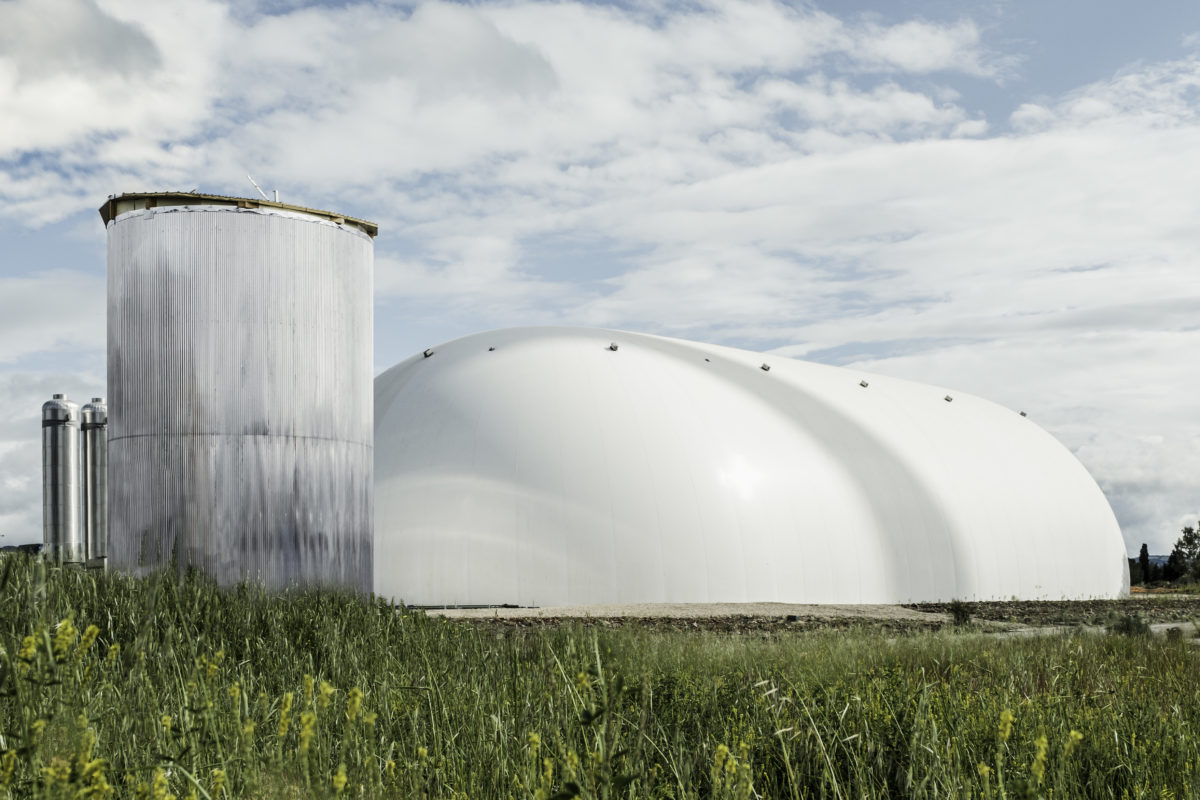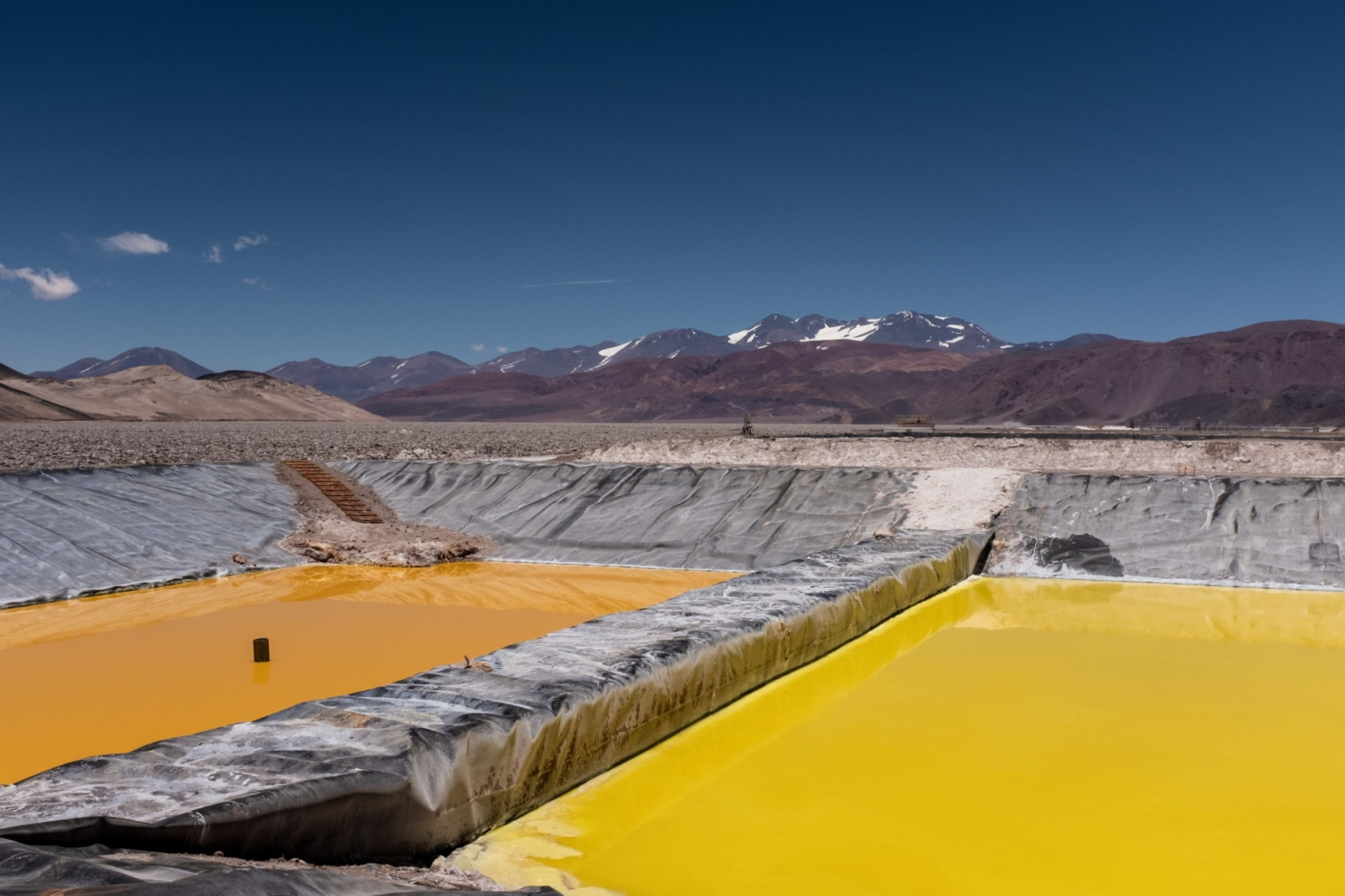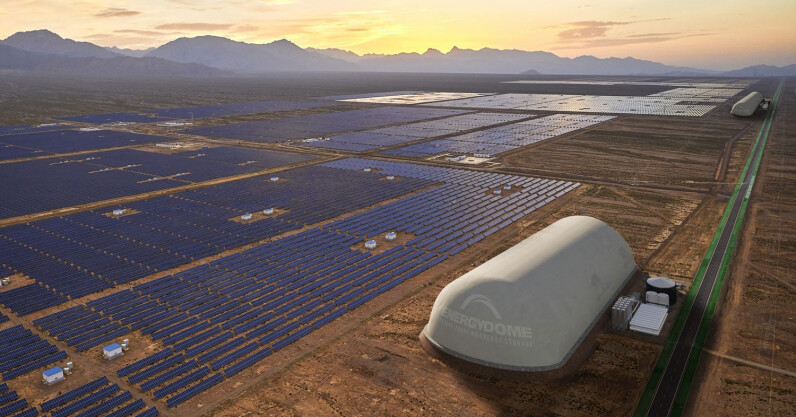Renewable energies like wind and solar are clean, abundant, and cheap — but notoriously unpredictable. That’s why so much time and money has been pumped into scaling energy storage solutions: we need to keep the lights on even when the wind isn’t blowing or the sun isn’t shining.
While lithium-ion batteries have received the bulk of this investment, there’s another kid on the block that could be cheaper and greener. In an ironic twist, the whole system is powered by the same molecule it is attended to fight — carbon dioxide.
Imaginatively, it is called the CO2 battery. The way it works is relatively simple. CO2 gets stored in a gigantic dome. When charging, the system pulls the gas from the dome, compresses it into a liquid and stores it in big carbon steel tanks. The compression process also produces heat which is stored in ‘bricks’ made of steel shot and quartzite for later use.
Then, when power is needed, the liquid carbon dioxide is heated up using the hot bricks, rapidly turning it back into a gas — which refills the dome. On its way back to the dome, however, the gas spins a turbine, producing electricity.

And what about all the CO2 to fill that dome, you may ask? Well, it’s a closed-loop system so you only need to inject gas into the dome once across the battery’s entire 30-year lifespan. So by using a pinch of CO2 it can support the rollout of renewable energies that can cut our emission of the gas altogether.
‘Half the cost of lithium-ion’
The brainchild of Italian startup Energy Dome, the battery builds upon existing compressed air and liquid air energy storage technologies. Except, the use of CO2 brings a couple of distinct advantages.
Pure carbon dioxide is a lot denser than air, which means you can store the same amount of energy in a much smaller space. Up to ten times smaller than compressed air, in fact. And while liquid air energy storage is admittedly more space efficient than either CO2 or compressed air, it must be cooled to almost -200 degrees Celcius to achieve the desired results. This requires a lot of energy, which cuts efficiency, and is why liquid air energy storage has struggled to compete with other storage technologies on cost.
But affordability is exactly where CO2 batteries excel. They’re built using steel, carbon dioxide, and water. That’s it. The rest of the components — like pipes, compressors, and turbines — can be purchased off the shelf. According to Energy Dome, this means its system can produce electricity at half the cost of lithium-ion batteries.
Those are some impressive figures, which have naturally caught the attention of investors. At COP28 last week, Bill Gates’ Breakthrough Energy Ventures and the European Investment Bank jointly committed €60mn to help Energy Dome build its first commercial-scale plant on the island of Sardinia, Italy. This adds to the €80mn in funding the startup has already secured.
‘Game-changing technology’
The CO2 battery will store some 20MW of renewable energy supplied by nearby solar and wind farms on the island. Energy Dome already built a demonstration plant on the island last year. The smaller, 2.5MW, facility is currently operating and transmitting power to the grid.
Gelsomina Vigliotti, vice president at the EIB, called the initiave an “inspiring example of game-changing technology that we need more of in Europe and worldwide”.
Energy Dome’s founder, Claudio Spadacini, said the Sardinia plant will be the “first of many identical full-scale CO2 batteries”. The company said that the modular, simple design of its CO2 battery means it can be scaled relatively rapidly.
The company has already signed a deal with Norwegian wind energy giant Ørsted to install “one or more” of the CO2 batteries at its sites in Europe. If all goes well, construction on the first storage facility using Energy Dome’s CO2 battery could begin in 2024.

While lithium-ion batteries will no doubt continue to play an important role in the energy transition, the negative environmental and social consequences of their production have been thrown into the spotlight in recent years. They rely on a number of rare earth metals like lithium, nickel, and cobalt, the mining of which has been linked to extensive environmental degradation and even human rights abuses the world over.
If CO2 batteries can circumvent some of these impacts and undercut lithium-ion on cost, who knows, perhaps they could become the next big thing in energy storage.



